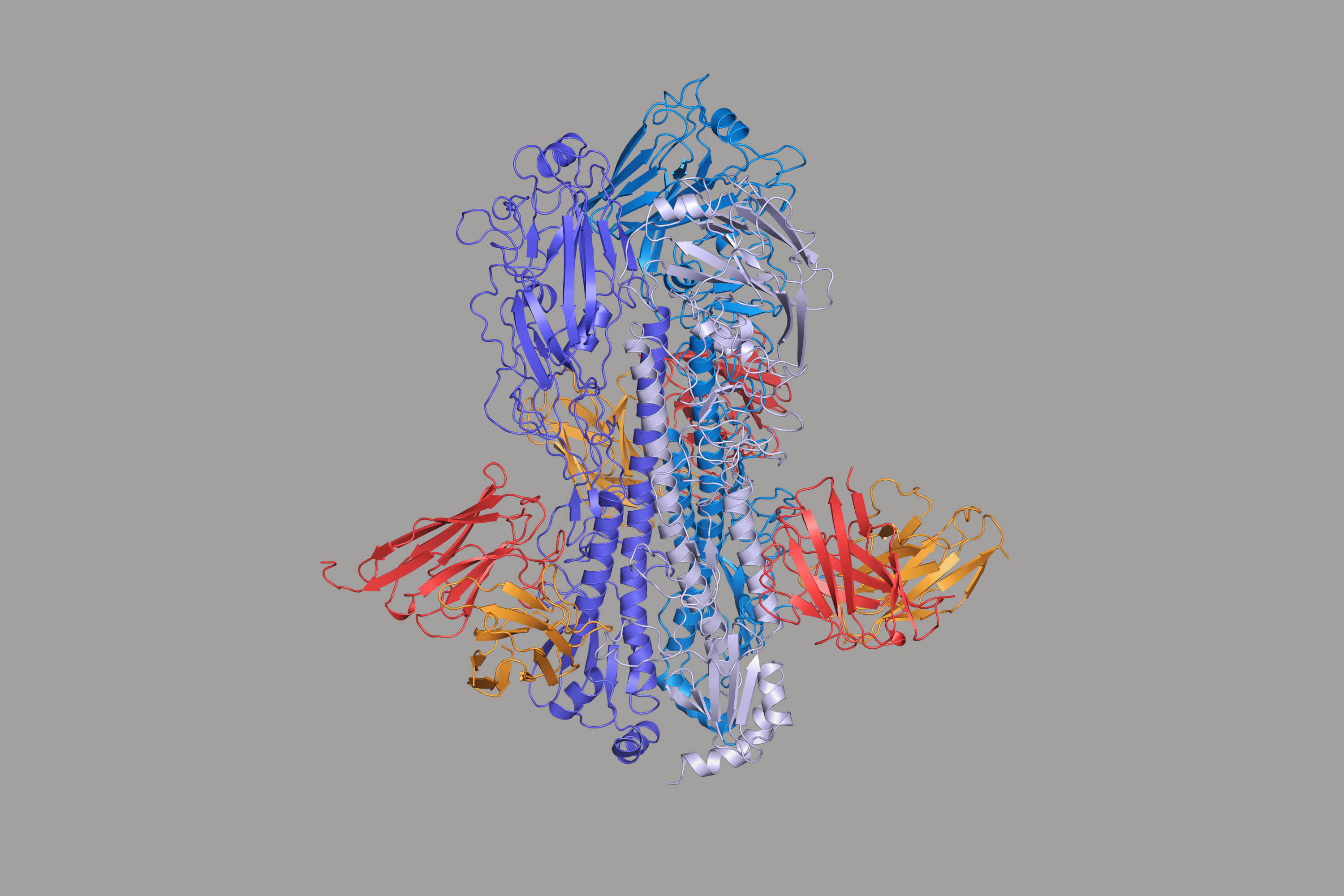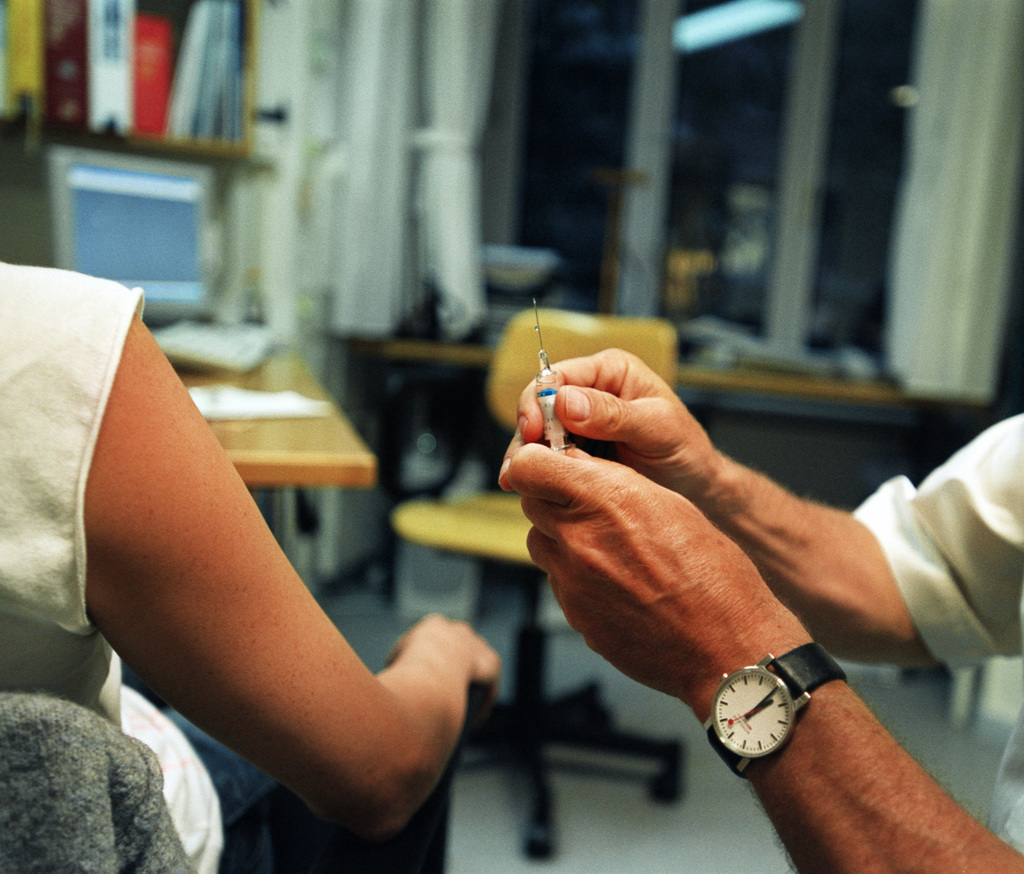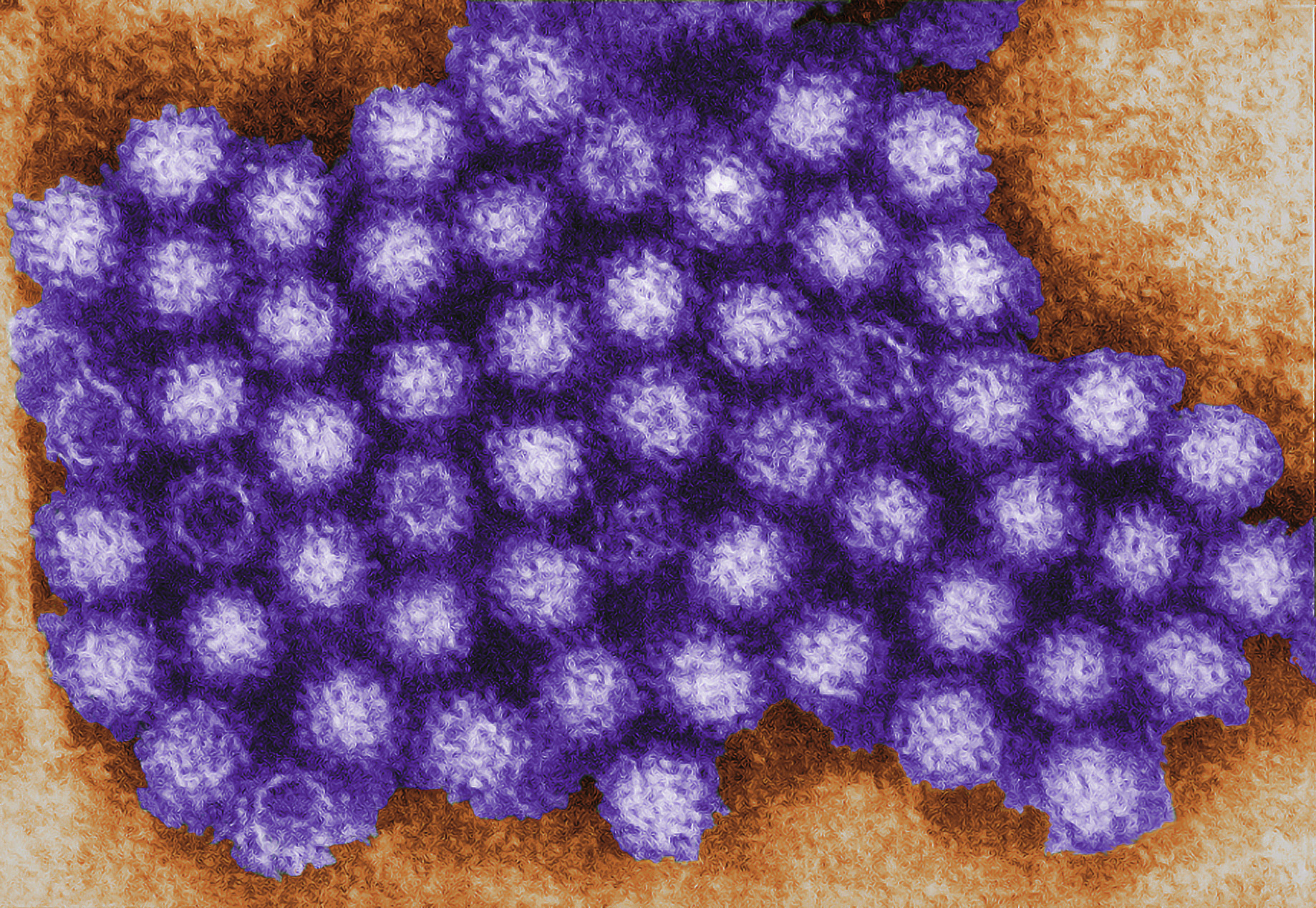Big discovery from a small research institute

Can scientists come up with universal vaccine against the flu? A discovery at the Institute of Research in Biomedicine in southern Switzerland has brought this goal a step closer.
Although it has only been in operation since 2000, the Institute of Research in Biomedicine (IRB) has already become a centre of international importance in the field of biomedical research. It has over 300 publications to its credit in academic journals, including Science and Nature.
A visitor arriving at the institute for the first time might be surprised at its location in Bellinzona. Its intensive scientific work and hi-tech lab seem at odds with the image of the peaceful town surmounted by three medieval castles that surround it, and of the 1960s building where it is based.
In spite of its low-key setting, the institute does state-of-the-art work in immunology.
“Research at the IRB is focused mostly on the study of human defence mechanisms,” explains Antonio Lanzavecchia, director of the institute, who heads a staff of about 80 people grouped into eight research teams.
“Studying the relationship between man and his pathogens, such as viruses, we can understand those defence mechanisms and search for new treatments. In this way our research can have a direct impact on human health.”
Lanzavecchia points out his high-tech tools and how they work. Refrigerators, one of which is at a temperature of 150° below zero, liquid nitrogen, cell irradiators, centrifuges, large incubators, automatic confocal microscopes and robots.
While touring the institute, Lanzavecchia talks briefly with a few researchers about how particular tasks are coming along. Some of the workstations are unoccupied: they belong to students taking a course with a visiting professor from Frankfurt University. Such seminar courses with guest speakers are a regular feature at the institute.
New weapon against flu
The recent discovery that has caused so much excitement is being called a “super antibody”. Antibodies are the tools used by the human immune system to pinpoint and neutralise invading bacteria and viruses.
“In this lab they are working on the part you really want to hear about,” says Lanzavecchia with a laugh as he opens a door. Inside, a researcher is examining molecules on a screen. He points to a graphic display of influenza haemagglutinin, a protein of the flu virus.
“Haemagglutinin is a trimer. It is made up of three molecules, with a globular head and a stem,” says Lanzavecchia, gesturing.
“Most of the antibodies attack it in the globular part. To hide itself from the antibodies, this part changes continually. So a new vaccine is needed every year. The antibody we have isolated at our institute, on the other hand, attacks it at the base of the stem. And that is the part common to all influenza viruses.”
The antibody isolated by researchers of the IRB, called FI6, is effective against all subtypes of influenza A. This has raised great hopes in the medical world, where it is being talked about as the first important step towards a universal flu vaccine that would trigger production of the super antibody by the immune system itself. But that goal is still far away, according to Lanzavecchia, because “it is going to be a very difficult project”.
However, he sees an alternative in the shorter term – using antibodies directly as medicines. “I think that antibodies against the flu virus could be introduced in treatment within about five years, if all goes well, or ten, if there are any obstacles.”
He emphasises that “antibodies are a new addition to our arsenal” and that “they can be used not only to cure more serious cases of flu, but as prevention for individuals at risk who do not respond well to the vaccine”.
The idea would be to give people small quantities of antibodies, “like the mother gives them to the foetus, the patient would get them early in the season and would be protected all through the winter”.
Getting to market
The scientific and therapeutic use of the discoveries at the IRB is being pursued by Humabs BioMed SA, a start-up also based in Bellinzona, currently employing around ten people. The IRB has already patented both the technologies for producing the human monoclonal antibodies, and the antibodies themselves. “Our entire antibody technology and the antibodies produced with it were licensed to Humabs in 2004,” says Lanzavecchia.
The task of Humabs is to develop the antibodies for therapeutic purposes at a preclinical level and then to market them through the pharmaceutical industry.
“It will take big pharmaceutical companies to be able to develop these antibodies,” notes Lanzavecchia.
“We’re talking about an investment of hundreds of millions of francs, maybe even as much as a billion, to be able to get to market. It’s out of the question that a small company could do something like that. The important thing is to transfer the research to the industrial domain.”
On how the project to transform the FI6 antibody into a drug for prophylaxis and treatment of all the types of influenza A will develop, Lanzavecchia doesn’t say. But he remains confident.
“This is an idea that I think is really doable, even if it will take time. It will be necessary to test these antibodies in man to find out whether they work and if so, how, because up till now they have only been tested on animals. But I am optimistic, because the antibodies are effective independent of the recipient’s response.”
Founded in 2000 in Bellinzona, the Institute of Research in Biomedicine (IRB) has the stated goal of “advancing the study of human immunology, with particular emphasis on the mechanisms of host defence”.
Networked with various Swiss and foreign institutions, it undertakes collaborations with researchers throughout the world. In 2007, it became co-founder of SwissVaccine, the national institute for research on vaccines in Lausanne. Since 2008 it has been a partner of the Federal Institute of Technology in Zurich, where IRB director Antonio Lanzavecchia also teaches, and since 2010 it has been affiliated with the University of Italian Switzerland.
At the end of 2011 it had 312 publications to its credit in international scientific journals.
The discovery of the FI6 antibody, which neutralises all subtypes of influenza A, is just one of a series of significant discoveries made by these researchers. The most recent dates from last September: in collaboration with scientists in several countries, Lanzavecchia’s researchers discovered the origin of auto-antibodies that cause pemphigus, a serious auto-immune disease.
The IRB currently has about 80 employees, including scientific, technical and administrative staff.
Its 2011 budget was just over SFr15.5 million. The IRB’s income fell into the following categories: Swiss and international research contracts (49%), state contributions (29%), private donations (18%), and other sources (5%).
(Adapted from Italian by Terence MacNamee)

In compliance with the JTI standards
More: SWI swissinfo.ch certified by the Journalism Trust Initiative



You can find an overview of ongoing debates with our journalists here. Please join us!
If you want to start a conversation about a topic raised in this article or want to report factual errors, email us at english@swissinfo.ch.